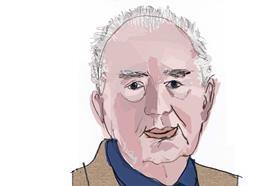English-born ‘Big Bill’ Howe, the great New York criminal lawyer of the late 19th century, rarely prosecuted. But in spring 1888 he had in his sights Editha Diss Debar, who claimed to be the daughter of the adventuress Lola Montez.

Physically, they were a match for each other. Howe weighed 300lb and Debar, described as ‘an overgrown sack of meal loosely gathered in at the centre’, a few pounds less. She was, however, no match for him in courtroom technique.
She and her ‘husband’, the married soi-disant ‘General’ Joseph Diss Debar, had latched on to the elderly and recently widowed lawyer Luther Marsh, moving in to his Madison Avenue house and having him sign over the deeds.
Debar had been able to persuade Marsh that she could communicate with the late Mrs Marsh through the spirit world. She also produced paintings approximately in the style of Rembrandt and Raphael on seemingly blank canvases depicting luminaries such as Shakespeare and Cicero. When she demonstrated her art to the painter Albert Bierstadt, she balanced a board, which later manifested a picture, on his head. Unfortunately this was done in front of a mirror and Bierstadt watched as the board was exchanged for the finished painting. Legal friends of Marsh instructed Howe.
On remand in the Tombs, Editha saw some sense and, advised by Cicero, or more likely her lawyers, gave the house back. The committal proceedings were avidly followed by the public and press. Debar continually interrupted Howe and the witnesses, with a group of spiritualists providing a Greek chorus applauding any point they thought might be in her favour. But once Howe called a conjurer to show just how the painting trick worked, the Debars were sent for trial. They received a relatively modest six months. Cicero’s advice had been sound.
Marsh, who had never wanted the case brought, visited Debar in prison.
James Morton is a writer and former criminal defence solicitor































No comments yet